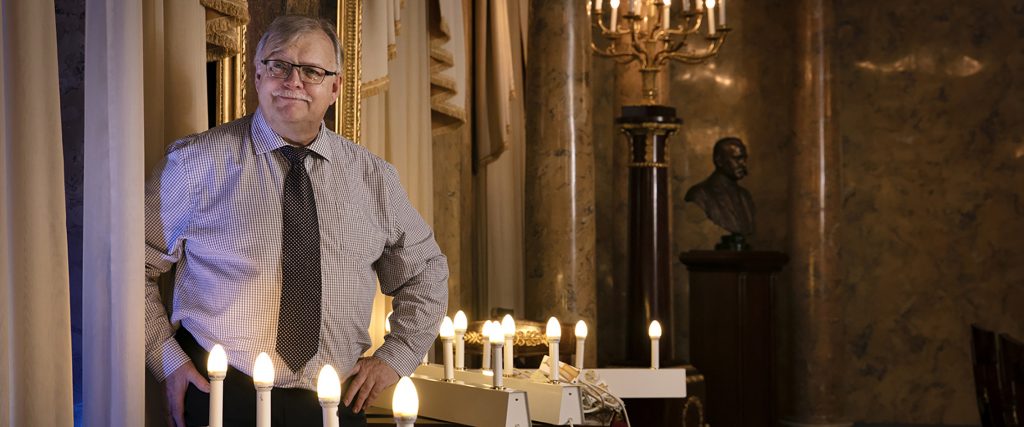Photo: © Helsinki Marketing / Aleksi Poutanen
Urbanisation is a global megatrend, which is also evident in our capital. The population of Helsinki is growing, and Helsinki residents increasingly want to live in the centre of Helsinki, enjoying the beat of urban life. At the Senaatin Tori event, real estate professionals and influencers discussed how to ensure the vitality of Helsinki amidst all the changes. The following five phenomena came up:
1. Complementary functions keep the city alive around the clock
Suburban areas are for living and office districts are for work, but the city centre area is a delightful combination of these: residential and commercial facilities complement one another and keep the city alive around the clock. Workplaces create demand for speciality shops and services, and cafés and restaurants rely heavily on employees’ lunch hours.
Bricks-and-mortar shops are an iconic example of the multifaceted nature of the city centre area and of the unique experiences it offers. New types of hybrid sites are now emerging in the centre, with various functions – housing, services and workplaces – under one roof.
Helsinki aspires to be the most functional city in the world. According to Mikko Aho, Executive Director, Urban Environment at the City of Helsinki, the new strategy for the capital is being implemented in cooperation with partners.
2. Aggregation and space conversion are competing against one another
For companies, the dense structure of the city centre area is a competitive advantage. This is a question of aggregation: the more business operations an area has, the more the companies benefit from one another. Helsinki is a top hub for productivity. The capital generates one-third of the gross domestic product, with the city centre representing as much as 60 per cent of this.
Helsinki residents increasingly want to live in the centre of Helsinki. Space conversion – for example, the conversion of offices into apartments – is currently a hot trend, particularly in the heart of Helsinki. At the moment, apartments are the most attractive option for property owners. However, the City of Helsinki wants to ensure that the city centre will also continue to offer sufficient facilities for Finnish start-ups and international companies alike.
Law firms, IT companies and start-ups have replaced banks and government agencies in the city centre. Co-working facilities cater to the needs of freelancers, micro-enterprises and telecommuters. Corporate facilities are increasingly developing into meeting places. Location is no longer the only factor that matters, as flexibility has become a key criterion in the selection of facilities.
3. The city centre area is growing in all directions
The current city centre area cannot grow infinitely, which is why Helsinki is expanding it in the west, east and north. The new districts of Jätkäsaari and Kalasatama are emerging rapidly and will be followed by Central Pasila, which will become an area resembling a city centre. Central Pasila will unite East and West Pasila, which are separated by railway lines. Located between Pasila and Kalasatama, the Teollisuuskatu area is also intended to be developed into an increasingly significant hub.
City boulevards are one of the major features of the new master plan for Helsinki. They will connect different parts of the city, and entirely new urban areas will emerge along them. City boulevards will also determine the location of the first traffic lights for those arriving in the city.
What makes the city centre area? Can more apartments be built in the city centre? Or are we running the risk of a shortage of commercial facilities? How do we steer the growth of the city in an agile manner over the long term? The vitality of the Finnish capital was discussed by a panel consisting of Marja Piimies from the City of Helsinki, Matti Kuronen from Bonava, Kimmo Kurunmäki from RAKLI and Antti Savilampi from Antilooppi. The panel was moderated by Jenni Lautso from Sito.
4. A functional, innovative city is created through cooperation
Helsinki wants to be the most functional city in the world – a city that is being developed not for organisations, but for the residents. The achievement of this goal calls for partnerships and cooperation between residents, communities and companies. At the same time, the city will develop into a platform for experiments: restaurants are allowed to build terraces on parking spaces, and pop-up restaurant events and cleaning parties have practically become business as usual in Helsinki.
5. Life situations become choices
In the future, living in the centre of Helsinki will be a choice and not just part of a specific phase of life. The city centre area has been regarded as a playground for singles, but families increasingly want to move back to urban environments. Twice the number of the current residents would like to live in the city centre area.
Traditional symbols of the city include landmarks and sights. Today, however, social media is strongly shaping our views of the city. The image of a city is increasingly based on how the people living or working there see and experience the city.
Senaatin Tori
The Senaatin Tori events bring together property developers and real estate investors, as well as experts, operators and authorities in the property sector. Read more and view the presentations: https://www.senaatti.fi/senaatin-tori/


